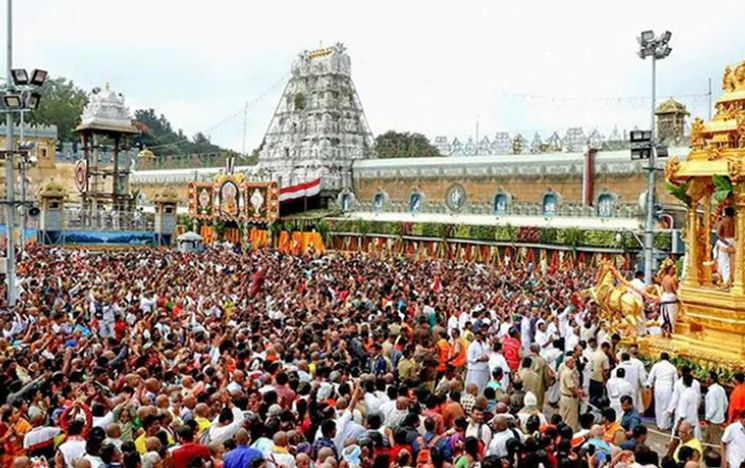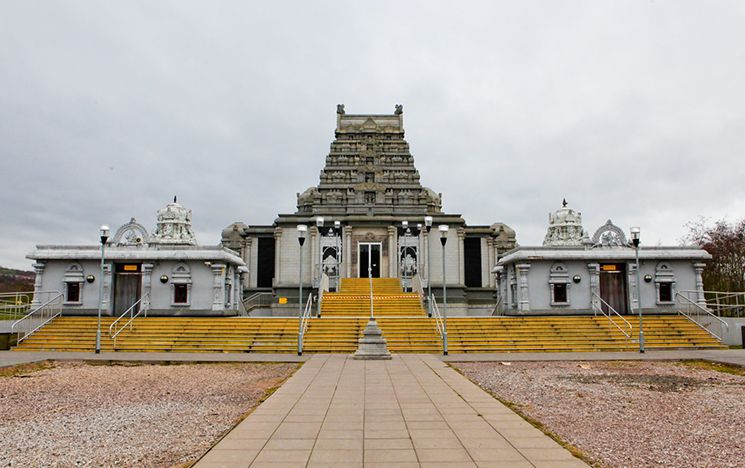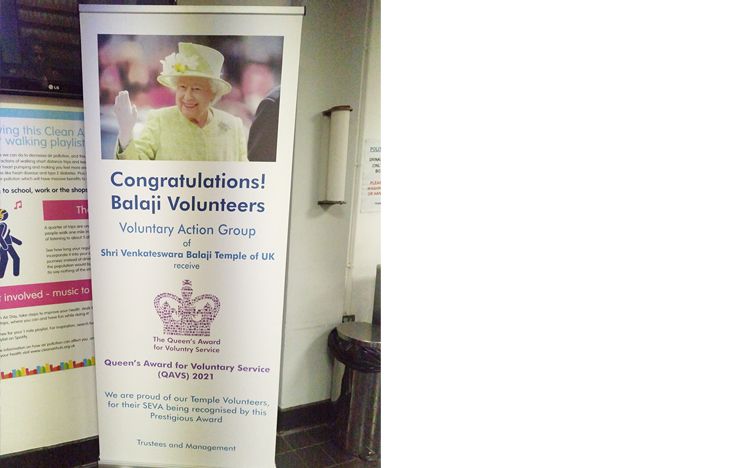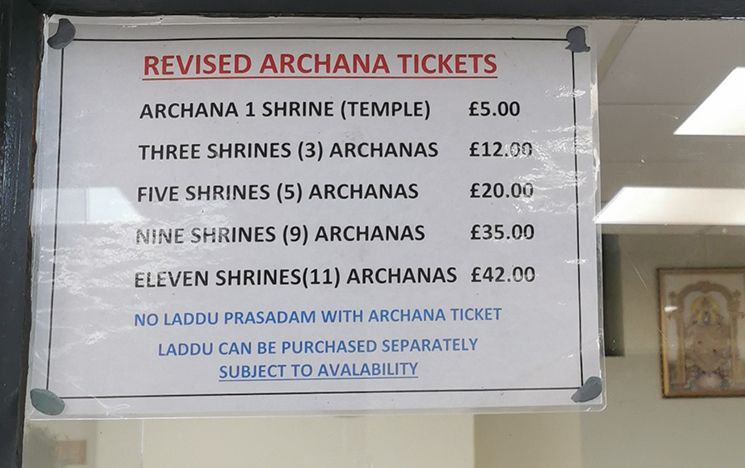Sri Venkateswara Temple, Tirupathi and Birmingham: Revealing its Architectural Splendour
Smytta Yadav
The Sri Venkateswara Temple in Tirupathi, India, is a magnificent representation of rich cultural history and spiritual significance. Also known as the Balaji Temple, this awe-inspiring structure holds deep religious significance for Hindus, but beneath its majestic facade lies the fascinating concept of a simulacrum.
Beyond its physical splendour, the Sri Venkateswara Temple stands as a profound symbol of devotion and commitment for devotees. Pilgrims undertake scenic routes, such as ‘Srivari Mettu’ and ‘Alipiri Route,’ singing songs and praying while traversing the hills to reach the temple. Festivals further enliven the Tirumala Hills as devotees gather to celebrate and engage in devotional activities, infusing the atmosphere with spirituality.

Figure 1: Daily Crowd at Balaji Temple in India
Abhishekam (ritual bathing) and the recitation of Vedic hymns are just two of the everyday practises that contribute to this atmosphere of piety. The darshan, in which worshippers obtain a glimpse of Lord Venkateswara, is the high point of any trip there. The grandeur of the temple, combined with the devotion of its worshippers, creates a surreal atmosphere that blurs the line between the tangible and intangible. The Balaji Temple is a masterpiece of architecture, showcasing a stunning synthesis of different styles, most notably the Dravidian tradition. The temple complex is a work of art, featuring magnificent buildings and beautiful carvings and sculptures.
In comparison, the Birmingham Balaji Temple prioritises cultural relevance by integrating with the rich cultural fabric of Britain and customising activities and programmes to build a strong connection with the local community. Acknowledging the multicultural setting, the temple actively participates in interfaith cooperation, promoting harmony and understanding among Britain's various religious communities.

Figure 2: Balaji Temple in Birmingham
By sponsoring activities that address the requirements of British society and contributing to local welfare programmes, the temple expands its community service to address specific socioeconomic challenges that are common in the UK. In addition, the temple ensures inclusivity for worshippers from different linguistic origins by providing services and communications in numerous languages, recognising linguistic variety.
The property in Tividale, northwest of the city of Birmingham, consists of a tip known as Monks Tip and the abandoned Brades Hall Farm. The expansive site was bordered to the west by a canal, to the north by a section of the Tame River, and to the south by the major A457 road. Indian architectural research fellow Professor Adam Hardy created the temple's design based on classic south Indian temple structures. The plan for matching money was adopted by the Millennium Commission in 1996. In 1997, there was a foundation-laying ceremony, which symbolically consecrated the land. Additionally, Dr. Dakshinamoorthy, an expert in designing temples in accordance with Vedic principles (stapathi), was consulted in India for the development of the design in Britain. With its recognisable granite handcarved gopura (towers) that have numerous traditional stone carvings, the main temple was constructed in a style reminiscent of South Indian Dravidian architecture. August 2006 saw a great celebration marking the completion and consecration of Lord Venkateswara's main temple with a Kumbabishekam. Additionally, the compound has seven symbolic hills honouring the various world religions. On a hill dedicated to Buddhism, a wooden statue of Buddha created by a local artisan was erected in 2001. Later, the wooden statue was replaced with a granite Dharmachakra, also known as the Wheel of Dharma.
In 2008, Dr. Rowan Williams, the Archbishop of Canterbury at the time, officially opened the Christian Hill by unveiling a plaque containing a biblical quotation. A steel sculpture representing the faith was constructed on the Zoroastrian Hill in September 2013 by a local artist. The other Faith Hills stand for Islam, Judaism, Sikhism, and Jainism. Interfaith gatherings are facilitated by the temple.
The Gandhi Peace Centre was constructed in the Balaji grounds and opened its doors in 2018 with a grand opening ceremony led by its donor, Mrs. Rajashree Birla of the Aditya Birla Group. It is the first of its kind outside of India. It is a straightforward circular structure with study, yoga, and meditation areas as well as exhibits detailing the life and times of the freedom fighter, Mahatma Gandhi. The temple also offers amenities and lodgings for everyone, irrespective of physical ability, in accordance with UK accessibility guidelines.
While the Tividale temple speaks to the global circulation of Indian architectural traditions, it is firmly grounded in local communities. Engaging British Asian youth, solving their particular difficulties, and promoting leadership development that fits the local environment are priorities. The temple incorporates British cultural events into its calendar to foster connections with its patrons through activities that speak to their dual cultural identities. Cultural festivities are one way to do this, ones that draw British Hindus from far and wide.

Figure 3: A Hindu priest performing a seva/service for Blessing a New Car purchased by Visitors at Birmingham Temple

Figure 4: A felicitation by HRM to Balaji Temple at Birmingham

Figure 5: A list of different on-the-spot services offered by the Birmingham temple